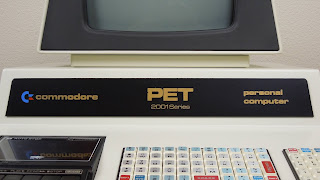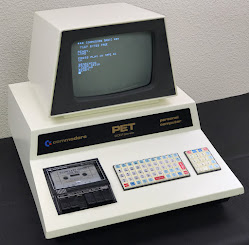My oldest computer.
This is an early unit from 1977 with the Sanyo type cassette drive. SN# 0010165, dated 10/24/77 by the testing sticker on the main board. This is one of the first 100 units produced in Oct ‘77. Everything is factory original except for one ram chip that was replaced during repairs.
click on photos for higher resolution
The Sanyo tape recorder is the same one used in the original wooden prototype. According to John Feagans, one of the Commodore engineers who created the original PET, the Sanyo recorders were purchased from a local retail store in Palo Alto and modified in-house. They were only used in pre-production units and in the first 100 production run in the Fall of 1977.
Most people think that the earliest units had a blue screen bezel, but the first 100 were black. These were in a way, pre-production units. Commodore was still working out the production and testing processes in Santa Clara in October. They didn’t have the OEM cassette drive yet, so they continued using the retail Sanyo drive that was used in pre-production units.
Full scale production didn’t start until December using the OEM Cassette drive and the blue monitor bezel.
The opening in the case for the cassette drive and the mounting hardware are different for the OEM cassette, so the drives are not interchangeable.
The case badge is unusual. It is made of metal and is raised off the surface on standoffs. This type of case badge was only used thru the end of '77. By Jan '78 they were using adhesive labels.
The serial number sequence started with 001 for North America, so this serial number 0010165 is #165. It's worth noting that Commodore didn't always use serial number labels in sequence and sometimes skipped blocks of numbers. The metal chassis was made in Toronto by the Commodore factory that made filing cabinets. The logic boards and final assembly was done in Santa Clara, California.
The mounting hardware for the Sanyo drive can be seen in the photo below. There is no front bracket like the one used on the OEM drive.
This has the original version 1.0 ROMs, so it's not capable of accessing IEEE floppy disk drives. The logic board is assy 320081, Part No. 320080 Rev B. It is an early version of the board with no solder mask on the top side. The ROM chips are Synertek, RAM is MPS 6550 1Kx4.
The hand written number on the board near the front-left (0170) is a production serial number to track boards during testing and re-work. A hand written number like this can be found in this area on almost all 2001-8 boards, especially the early ones from late ‘77 thru mid ‘78.
The sticker with the date and initials is from production testing and indicate the date it passed testing and the technician’s initials who did the testing. In this case the board passed initial testing on 20 Oct but probably failed during burn-in and was repaired and re-tested on the 24th. A sticker like this can be found on many very early boards, though it may have been removed or fallen off most.
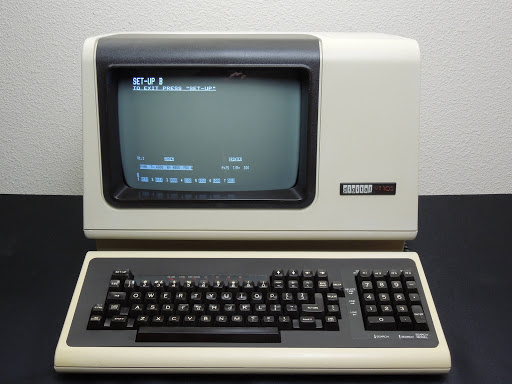
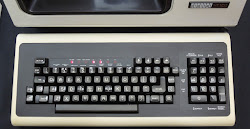


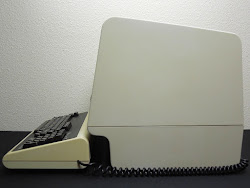










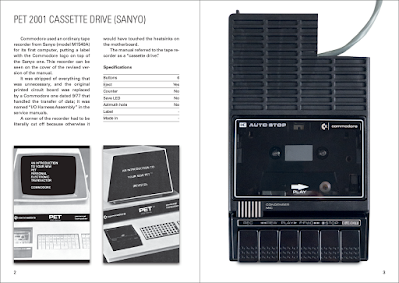
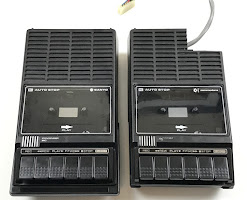
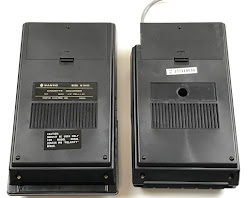


![Commodore PET 2001-8 [0010165] (1977) Commodore PET 2001-8 [0010165] (1977)](https://blogger.googleusercontent.com/img/b/R29vZ2xl/AVvXsEgcyfTVXgn6wmG32AeiRdptDWX11JLtKkQCF1CjvP77g7R6qt0RmNEXDFbUG18JSZBA5gL7uo5_1cXCIKaHzDBp5MidWjBR9A_yawpgOZpOtE0mgvmtAyTXSN5ajSCnrqbcoSheDPD5J5-g/w512-h384/DSCN1435.JPG)




